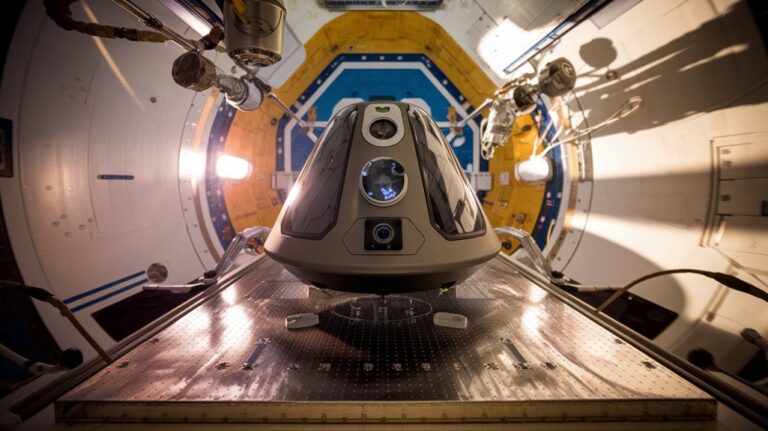When Tim Berners-Lee Almost Gave Up on Linking Webpages Forever
You've probably heard of Tim Berners-Lee as the inventor of the World Wide Web, but you might not know how close this revolutionary idea came to disappearing forever. In the early days of his work at CERN, Berners-Lee faced such harsh criticism and skepticism that he nearly abandoned the entire project. His "vague but exciting" proposal for linking documents across computers wasn't just dismissed—it was actively ridiculed. Yet something remarkable happened that changed everything.
The Day Doubt Crept In

While Tim Berners-Lee's vision of the World Wide Web would eventually revolutionize global communication, explaining its potential wasn't easy in the beginning. The initial web skepticism was widespread, as people struggled to grasp why this new technology mattered or how it would function in their daily lives.
You'd think demonstrating hypertext challenges would've been straightforward – just click a link and watch it take you to another page. But even this simple concept failed to impress many observers. They couldn't make the mental leap to envision a world where documents could be infinitely connected. Many simply compared it to existing CD-ROMs instead. Now, as we celebrate the web's #Web30 milestone, we can reflect on how far we've come.
Despite these doubts, a determined grassroots movement kept the dream alive. It took conviction and persistence to help others understand that the web's true power lay in its ability to connect virtually any document to another across the globe.
A "Vague but Exciting" Rejection
Despite its revolutionary potential, Tim Berners-Lee's World Wide Web proposal initially faced significant academic skepticism, culminating in its demotion to a poster session at the Hypermedia '91 conference in San Antonio.
Critics dismissed his exciting innovation as a "spaghetti bowl of gotos," failing to recognize that its simplicity would become its greatest strength. A retrospective video featuring Mark Frisse's apology shows recognition of this historic misjudgment.
His steadfast commitment to making the technology royalty-free shaped the foundation of the modern internet.
You might wonder why this vague optimism wasn't enough to convince the academic community.
Here's what made the Web challenging to accept:
- Its design was so simple that leading experts misunderstood it
- It deviated from traditional document management systems
- The concept of universal hyperlinking seemed impractical
- Its royalty-free nature challenged existing business models
Yet, Berners-Lee's persistence proved essential.
The rejection ultimately shaped the Web's development, leading to its unprecedented success in revolutionizing information sharing worldwide.
The NeXT Computer That Changed Everything
Innovation often springs from the right tools in the right hands. When Tim Berners-Lee received a NeXT computer in 1990, he got exactly what he needed to create the World Wide Web.
The NeXT specifications were impressive: a Motorola 68030 CPU, custom VLSI chips, and a powerful 56001 digital signal processor. But it wasn't just raw power that made this machine special. The system featured a groundbreaking magneto-optical drive for storage. The machine's Objective-C language provided the perfect foundation for building complex software applications.
The NeXT became history's first web server, featuring advanced networking capabilities and a sophisticated operating system called NeXTSTEP.
You'd find cutting-edge features like virtual desktops, high-resolution displays, and a graphical interface powered by Display PostScript. With 16-bit color support displaying 4,096 colors and built-in Ethernet capabilities, this machine gave Berners-Lee everything he needed to demonstrate his vision and transform the Internet forever.
CERN's Unofficial Pet Project
Although Tim Berners-Lee's web proposal received a lukewarm "vague but exciting" response from CERN supervisor Mike Sendall in 1989, this initial hesitation didn't stop the project's momentum.
Despite not being an official CERN project, Web development flourished thanks to four key aspects of CERN's support:
- Sendall granted Berners-Lee access to a vital NeXT computer in September 1990.
- CERN's position as Europe's largest Internet node provided essential infrastructure.
- The organization allowed time and resources for developing the first browser and server.
- Most importantly, CERN later made the revolutionary decision to release the Web's code royalty-free.
You might wonder why CERN backed an unofficial project. The answer lies in their recognition of its potential to revolutionize information sharing, even if they didn't fully grasp its future impact at first. The project gained momentum when Berners-Lee and his team created the first web page by Christmas 1990, marking a crucial milestone in Internet history. The collaborative environment at CERN, with its 17,000 scientists from over 100 countries, provided the perfect testing ground for this new communication tool.
The Breakthrough That Saved the Web

When Tim Berners-Lee envisioned linking documents across computers in 1989, he'd just stumbled upon the breakthrough that would revolutionize information sharing forever. His hypertext innovation allowed direct, random links between documents, transforming how you'd access information.
Despite initial skepticism marked by a "vague but exciting" note on his proposal, Berners-Lee persevered. He developed three essential technologies – HTML, URI, and HTTP – that formed the web's foundation. Berners-Lee developed this system while working at CERN laboratories, where he first recognized the need for better information sharing.
By ensuring these remained royalty-free, he paved the way for universal adoption. The concept of data interoperability went beyond simple document linking; it aimed to create a global public square where computers could extract meaning from information.
From Near-Failure to Global Success
Despite facing significant skepticism at CERN and limited support from his peers, Tim Berners-Lee's unwavering dedication transformed the web from a potentially failed concept into a global phenomenon.
His vision of combining hypertext with the Internet sparked a web revolution that would forever change how you communicate, work, and live.
The path to digital innovation wasn't easy, but four key factors drove its success:
- Berners-Lee's persistence in overcoming technical hurdles and skepticism
- The web's foundation as an open, decentralized system
- The successful integration of existing technologies into a more abstract framework
- A clear focus on facilitating documentation access and collaboration
As a former employee at Plessey Telecommunications, he gained valuable experience refining technology that would later influence his development approach.
Today, you're witnessing the web's continuous evolution as Berners-Lee works to address modern challenges through initiatives like the Solid platform, aiming to restore digital democracy and user control over personal data. The web's remarkable journey spans 30 years since its creation at CERN, where it was initially designed to interconnect distributed data.










